Let's face it--designing the engine to work as a system of related components is no simple task. All of the parts within any engine are designed and engineered using the appropriate mathematics to function efficiently and be durable. This insightful book, Performance Automotive Engine Math, will escort readers through the complete engine, showcasing the methodology required to define each specific parameter. It also shows how to translate the engineering math into the hard measurements reflected in various engine parts. Whether you're a budding engine enthusiast or a professional builder, this book is a must!
4.75 out of 5 stars
( 4 )
J.W. Performance "How to build a Powerglide" books are perfect for the novice or experienced builder. With over 170 pages of detailed explanations and pictures, these books are sure to help you out.
5.0 out of 5 stars
( 1 )
Unlock the performance potential of your LS Gen IV engine with the best products and modification procedures for a variety of applications from engine-building and LS expert Mike Mavrigian. To make more horsepower, more airflow and fuel into the engine is needed; therefore, how to select the industry-leading aftermarket heads and port the stock heads for superior performance are comprehensively covered in SA Design LS Gen IV Engines 2005-Present: How to Build Max Performance.
Not Yet Reviewed
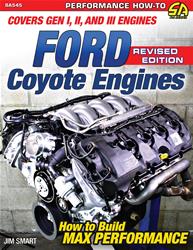
Realize your Ford Coyote engine's full potential by using this detailed resource as a guide to select the right parts for the street or the strip. Veteran Ford writer and historian, Jim Smart, explains and highlights all of the latest and greatest options to achieve more horsepower and torque—and of course, faster quarter-mile times— in "Ford Coyote Engines: How to Build Max Performance."
In this Revised Edition, now covering Generation III engines as well as Generation I and II, upgrades included are engine building techniques, cold-air induction kits, supercharger and pulley kits, better exhaust headers, fuel system and ECU tuning upgrades, and more. Both Ford and the aftermarket have produced an array of parts to squeeze even more power out of your Coyote.
Ford introduced its first "clean slate design" V-8 engines in the early 1990s in Ford, Lincoln, and Mercury models. Known as the "Modular" engine family, the 4.6L engines employed new overhead cams, multi-valve performance, distributor-less ignition, and more. This engine had new technology for its time, and it proved to be an extremely durable workhorse that logged hundreds of thousands of miles in police and taxi applications, as well as light-duty trucks. And, of course, hotter versions and even supercharged versions found their way into performance applications such as Mustang GTs and Cobras.
By 2011, Ford wanted something hotter and more current, especially for its flagship Mustang GT and GT350 models—which were suddenly competing with new 6.2L LS3 engines in Camaros and 6.4L Hemi engines in Challengers. Enter Ford's new 5.0L "Coyote" engine with Twin Independent Variable Cam Timing (Ti-VCT); it was an evolution of the earlier 4.6L and 5.4L Modular designs. Although the new Coyote engine had increased displacement, it still had far fewer cubes than the competition. Despite less displacement, the Coyote could hold its own against bigger Chevy and Chrysler mills, thanks to advanced technology such as 4V heads with better port and valvetrain geometry. The Coyote is also Ford's first foray into technology that includes Ti-VCT and cam-torque-actuated (CTA) function, which is a fancy way of saying variable cam timing for an incredible power curve over a broader RPM range. Now, in Generation III, Ford has implemented a system using both Port and Direct Fuel Injection, taking advantage of the benefits of both systems in a single application.
Even with all of this new technology, there is always room for improvement. If you're looking for even more power from your new Coyote, you'll find answers in the 160-page paperback from SA Design and CarTech. More than 580 color photos are included.
4.0 out of 5 stars
( 2 )
Written with high performance in mind, this book, Ford 351 Cleveland Engines: How to Build for Max Performance, reviews the history and variations of the 351 Cleveland and Ford's related engines, the 351M and 400M. Basic dimensions and specifications of each engine, along with helpful tips for identifying design differences and casting number(s) are shown. In addition, the strong points and areas of concern for each engine type are described in detail. So, if you want to build a great street or competition engine based on the 351 Cleveland platforms--this is the book for you!
3.67 out of 5 stars
( 3 )
HP Books Chassis Engineering for High Performance Cars, clearly explains the complex principles of chassis design and suspension engineering in terms that anyone can understand. Information is provided on how to build the maximum cornering power into your vehicle's suspension, and how aerodynamic forces affect your suspension. You'll learn how to set up your sports car for road racing your modified for the Circle Track, and even learn how the professionals set up a Nextel Cup car for the high banks of Daytona! This book should have a place in every enthusiast's library.
4.5 out of 5 stars
( 4 )
If you own an LA small-block-powered Mopar car or truck, this invaluable guide and instructions will allow you to optimize performance and maintain reliability. The LA engine platform evolved into the Magnum 5.2- and 5.9-liter engines and became the new standard of Mopar small block performance. In SA Design's "Mopar Small-Block Engines: How to Build Max Performance" expert and author Larry Shepard identifies the best parts—and clearly guides you through the specific techniques to extract maximum performance for LA and Magnum engines. In particular, he covers heads, cams, and valvetrain products and modifications that will achieve your horsepower targets. In addition, Shepard provides exquisite details and in-depth build-up instruction for other essential components—locks, cranks, pistons, rods, ignition systems, intakes, carburetors, and exhaust.
3.0 out of 5 stars
( 1 )
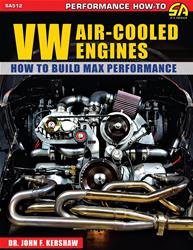
The VW Beetle (officially the Volkswagen Type 1) needs no introduction. Manufactured and marketed globally by Volkswagen from 1938 to 2003, more than 21 million were produced and sold around the world. Extremely popular in the U.S. and Europe during the 1950s and '60s, increasing competition from Japanese, American, and European manufacturers—as well as stiffening demands for better safety and emissions—contributed to a sharp decline in sales in the early '70s. The Beetle was manufactured in much smaller numbers in Germany until the late 1970s, when production shifted to Brazil and Mexico, where operating cost was a was a large factor in keeping the Beetle alive. While simple and fun, the Beetle had simply become outdated.
Of course, the enthusiast market did not see it that way. Aficionados loved the simplicity in the design, as well as its aesthetics—and enjoyed tinkering with the mechanicals of their Beetles, Buses, Type 3 models, and Karmann Ghias. There is no shortage of options when customizing your Beetle; and for many, extracting as much performance out of their air-cooled flat 4 was the way to go. Not only does it remedy the issue of keeping up with modern traffic, but Beetles also respond really well to modifications and have a robust aftermarket to support them.
In this 144-page paperback, "VW Air-Cooled Engines: How to Build Max Performance," VW veteran Dr. John F. Kershaw lays the groundwork for getting the most possible power for your desired use and application. Covered here are the various power levels and components to get you there. It's all included: rotating assemblies, cylinder heads, cams and the valvetrain, engine blocks, ignitions systems, fuel injection, carburetors and induction, exhaust, sources for parts, and even turbos and superchargers.
Are you looking for just a little more power to keep up with traffic or maybe a streetable high-performance machine? Perhaps you're interested in a little street/strip action or even all-out racing applications. All of your options are examined in this book from SA Design and CarTech. And you'll love the 245 color photos!
Not Yet Reviewed
A solid collection of upgrades, including suspension, brakes, and the installation of GM's most popular modern engine--the LS-Series V8, are all covered in the book GM G-Body Performance Upgrades 1978-1987. It contains great information for use when shopping for a G-body, including which areas to be aware of to check for possible corrosion, which options to look for, and which should be avoided. No other book on the performance aspects of a GM G-body has been published before. This book will serve as the textbook to G-body enthusiasts for many years to come.
Not Yet Reviewed

Learn your modification options for the most modern and exciting Jeeps! Going back to World War II, Jeeps have had a special place in America's heart. The utility vehicle that helped win the war transitioned into the civilian Jeep, or CJ, and the Jeep brand has had several owners over the years. While still remaining wildly popular, it has evolved. The Wrangler version of the Jeep was transformed with the release of the JK for the 2007 model year. With a more practical 4-door version, this Wrangler became a popular vehicle for year-round use, which appealed to off-roaders as well as soccer moms. For the 2017 model year, Jeep seriously upgraded the Wrangler, which is now dubbed the JL, and added an exciting new model, the Gladiator, or JT, which is essentially a pickup version of the Wrangler.
In "Jeep Wrangler JL and Gladiator JT: Performance Modifications," Jeep experts Don Alexander and Quinn Thomas introduce you to these new models and walk you through the capabilities and options for all of the trim levels. Then, they examine how to make these things better, system by system. Suspension, steering, and brakes are covered, as they are the heart of any off-road rig. Also examined are modification options for axles, driveshafts, and differentials—as well as bumpers, armor, and protection. Of course, off-roaders need a quality winch, recovery gear, and upgraded electrics, so options are explored here, as well. Wheels and tires are also very important for those leaving paved roads, and upgrade options for all of the trim levels and lift levels are covered thoroughly.
Whether you want to build a JL or JT to be a serious rock crawler or simply look like you're going off-road, all of your options are thoroughly explained in this 160-page paperback, which includes 461 color photos. Add a copy to your Jeep reference library.
Not Yet Reviewed
HP Books Performance Fuel Injection Systems is your practical guide to modifying and tuning modern electronic fuel injection (EFI) and electronic control unit (ECU) systems.
It includes information on:
* Stand-alones
* EFI system components and basic operations
* Fuel system and ignition requirements
* Sensors and how they work and interact with the ECU
* Aftermarket EFI systems
* Dyno and track testing
* Aftermarket EFI conversions
5.0 out of 5 stars
( 1 )
SA Design's How to Build Max-Performance Chevy Small Blocks on a Budget is a realistic "low-buck" approach to building serious horsepower. Author David Vizard, a highly regarded engine builder and technical writer, turns his attention to the ins and outs of building serious-horsepower small block Chevy engines on a budget (would you believe 600 hp for about $3,000?). Included are details of factory part numbers, easy do-it-yourself cylinder head modifications, inexpensive but effective aftermarket parts, 10 best engine combos for the buck, and more.
4.43 out of 5 stars
( 14 )
SA Design's How to Build High-Performance Chevy LS1/LS6 V-8s is an essential book for all enthusiasts who want to get the most performance out of their engine design but are only familiar with the older Chevy small blocks. It covers everything you need to know about these engines, including their difficult removal and installation, simple bolt-ons, electronic controls for the Generation III engine, and detailed engine builds at four different power levels. It also includes full-color photos.
4.25 out of 5 stars
( 8 )
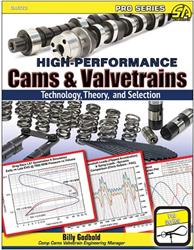
In the book: High-Performance Cams & Valvetrains: Theory, Technology, and Selection, Billy Godbold, farm kid-turned-physicist, combines his quarter-century of experience with valvetrains at Comp Cams, Lunati, Crane Cams, and Edelbrock. He also provides insight on the techniques he uses with professional teams in NASCAR, NHRA, road racing, dirt track racing, offshore racing, and land speed racing, guiding you to think about any valvetrain system with his perspective. Often lighthearted and filled with analogies, this book endeavors to make complex concepts easy to understand without ever watering down important details. Specific configurations and applications are also covered, providing techniques and examples for optimizing camshafts and the valvetrain around intakes, headers, superchargers, turbochargers, carburetors, fuels, and modern EFI applications. If you are planning or building a classic hot rod, modern performance LS, Hemi, Coyote, or Godzilla, or competition engine for road racing, circle track, or drag racing, practical details show you how any valvetrain system should be modified to extract the most from every component and help you achieve your unique goals.
Not Yet Reviewed
David Vizard, master engine builder and veteran author of How to Build Max-Performance Chevy Big-Blocks on a Budget, explains to readers how to obtain maximum performance while on a budget and also includes eight affordable and powerful engine builds in various price ranges. Readers will be versed on how to select the ideal parts, how to get optimal machining performed, and how to assemble the strongest Chevy big block engine package ever--all while on a budget. If you're planning on building a max-performance Chevy big block, but money is tight, then this book is definitely a must-have for you!
5.0 out of 5 stars
( 3 )
The book, How to Build Max-Performance Chevy LT1/LT4 Engines, guides you through the factory and aftermarket components of the LT1/LT4 engines. It provides recommendations and sound performance advice from the experts to achieve targeted results for your own project. Complete engine buildup recipes are provided, along with their respective horsepower and torque levels. So, if you want to learn how to best diagnose, repair, and rebuild LT1/LT4 engines, and well within budget, then this book is a must for you!
4.0 out of 5 stars
( 1 )
SA Design's Building & Tuning High-Performance Electronic Fuel Injection will help you learn to define air and fuel requirements based on rpm and horsepower. You will learn how to set up your base fuel and ignition maps to get things up and running fast, tweak your fuel and timing maps for light and heavy load situations, and adjust the timing for cold-starting or high-boost conditions. With all of the information in this book, you will never have to wonder if your tune is just right--you'll know it!
4.71 out of 5 stars
( 7 )
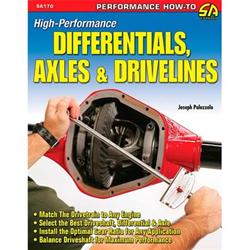
All too often, when an enthusiast builds a high performance engine, swaps a more powerful engine into a car, or mounts sticky tires, the driveline components simply can't handle the added torque and fail. In addition, the differential, axles, and driveline parts have a limited life span under the power of a high performance engine. Also, the proper gear ratios need to be selected and installed for maximum performance on the street, strip, or track. The performance of the driveshaft, differential, axle, and other driveline components needs to match the performance level of a particular engine so that maximum efficiency, longevity, and reliability can be realized. SA Design's High-Performance Differentials, Axles & Drivelines covers everything you need to know about selecting the most desirable gear ratio, rebuilding differentials and other driveline components, and most importantly, matching the correct driveline components to engine power output. Learn how to set up a limited-slip differential, install high performance axle shafts, swap out differential gears, and select the best available products for the driveline. This book covers the Chevy 12-bolt, Ford 8.8 in., Dana units, and many other popular high performance axles and rear-ends. In addition, it explains rear differential basics, rear differential housings, and rebuilding open rear, limited-slip, and factory differentials. Ring and pinion gears, axle housings, axle shafts, driveshafts, and U-joints are also covered.
3.33 out of 5 stars
( 3 )
SA Design's How to Build Max-Performance Ford FE Engines, from author Barry Rabotnick, provides a very insightful, easy-to-follow approach for selecting the right crank, connecting rods, pistons, and making necessary block modifications for Ford FE engines. In addition, this book covers port sizing, cam lift, the best rocker arm geometry, plus so much more! Finally, Ford FE fans can own the one book that they have been searching for!
4.67 out of 5 stars
( 3 )
This revised and updated edition of SA Design How to Build High-Performance Ignition Systems is the complete guide to understanding automotive ignition systems, from old-school points and condensers to modern computer-controlled distributorless systems, from bone-stock to totally aftermarket. Author Todd Ryden leads you through the various components, systems, and subsystems, explaining the theory behind how the parts work with each other to achieve the ultimate goal of efficient combustion. Coils, wires, spark plugs, distributors, magnetos, inductive systems, CD ignitions, multiple-spark systems, computer ignition controls, and rev limiters are explained using clear text and 275 color photos and wiring diagrams.
Not Yet Reviewed
SA Design How to Build Max-Performance New Hemi Engines 2003 to Present is the definitive guide to getting the most from your Gen III Hemi engine.
The New Hemi engine has an aggressive persona and outstanding performance. Unleashed in 2003, it has been offered in 5.7L, 6.1L, 6.2L, and 6.4L displacements. With each successive engine introduction, Chrysler has extracted more performance. And with the launch of the Hellcat and Demon 6.2L supercharged engines, Chrysler built the highest horsepower production engines ever made at the time.
Mopar engine expert and veteran author, Larry Shepard, reveals up-to-date modification techniques and products for achieving higher performance. Porting and modifying the stock Hemi heads is covered along with guidance on aftermarket heads. If you want more power out of your Gen III Hemi, this book covers it all!
Not Yet Reviewed
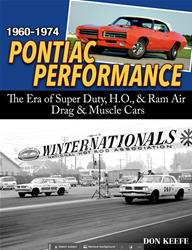
In an era before corporate average fuel economy (CAFÉ) requirements and emissions standards, a pioneering General Motors executive was tasked with taking over a dying division and returning it to profitability. In June 1956, Semon E. "Bunkie" Knudsen became the general manager of the Pontiac Motor Division. He injected the stodgy, boring product line with a large dose of performance. "Race on Sunday; sell on Monday" was Knudsen's philosophy.
Although the idea of Pontiac getting into racing was far-fetched in 1956, Knudsen had a plan. In 1957, Pontiac released the Bonneville, which was a limited edition, fuel-injected, high performance convertible aimed directly at the burgeoning enthusiast market. Knudsen skillfully crafted a new youthful persona for Pontiac, and the sales began to climb.
Pontiac's Super Duty factory-built drag cars produced an amazing line of winners. The performance mentality was clearly working, as Pontiac sales jumped to third place among the manufacturers—behind only Chevrolet and Ford. After GM ceased all racing activities in 1963, Pontiac hardly missed a beat. In 1964, the GTO was released, and a new market segment (the muscle car) was born, which sent the competition back to the drawing boards. In addition, Pontiac continued to create iconic muscle cars, including the 2+2, the Ram-Air GTO and Firebird, the Trans Am, the Judge, and the Firebird Formula.
Re-live Pontiac's golden era with "Pontiac Performance 1960–1974: The Era of the Super Duty, H.O., and Ram Air Drag and Muscle Cars." This 160-page paperback contains 329 illustrations and is a must-read for classic car enthusiasts!
Not Yet Reviewed
Have you ever wanted to know how to rebuild a carburetor? Install car audio components? How about nitrous or superchargers? SA Design how-to and reference manuals have you covered with in-depth technical information and plenty of photos and illustrations.
4.75 out of 5 stars
( 32 )
Whether you're a budget enthusiast looking for the best-possible factory head to top your specific combination, an engine swapper looking to modernize your vintage muscle car, or a racer looking for the best-flowing head out there, this high-performance "GM LS- Series Cylinder Head Guide" is essential for accomplishing your goals. This book reviews every readily available factory and aftermarket cylinder head designed for GM LS-Series engines and delivers the facts about each in an easily comparable format. It includes the basic dimensions of each head, along with their claimed airflow rates. Also included is information on interchangeability, combustion chamber sizes, compression ratios, applications, performance characteristics, helpful tips, and even a chapter on intakes. The photographs in this edition are black and white.
Not Yet Reviewed
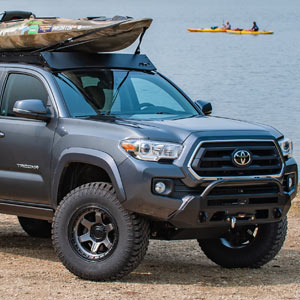 Truck / SUV
Truck / SUV
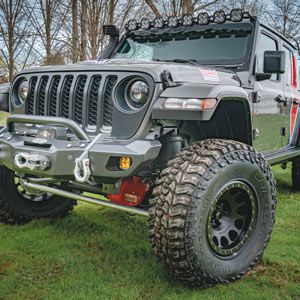 Jeep®
Jeep®
 Restoration
Restoration
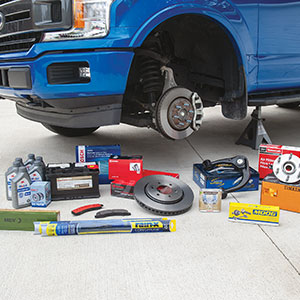 Stock Replacement
Stock Replacement
 Late Model Muscle
Late Model Muscle
 Tools
Tools
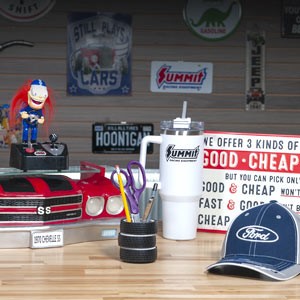 Gifts, Clothing, & More
Gifts, Clothing, & More
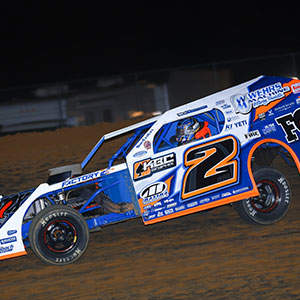 Circle Track
Circle Track
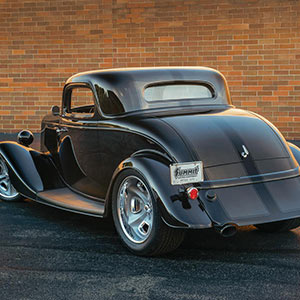 Street Rod
Street Rod
 Powersports
Powersports
 Paint & Body
Paint & Body
 Marine
Marine
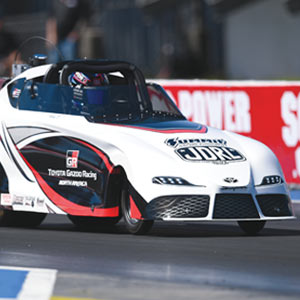 Jr Dragster
Jr Dragster
























